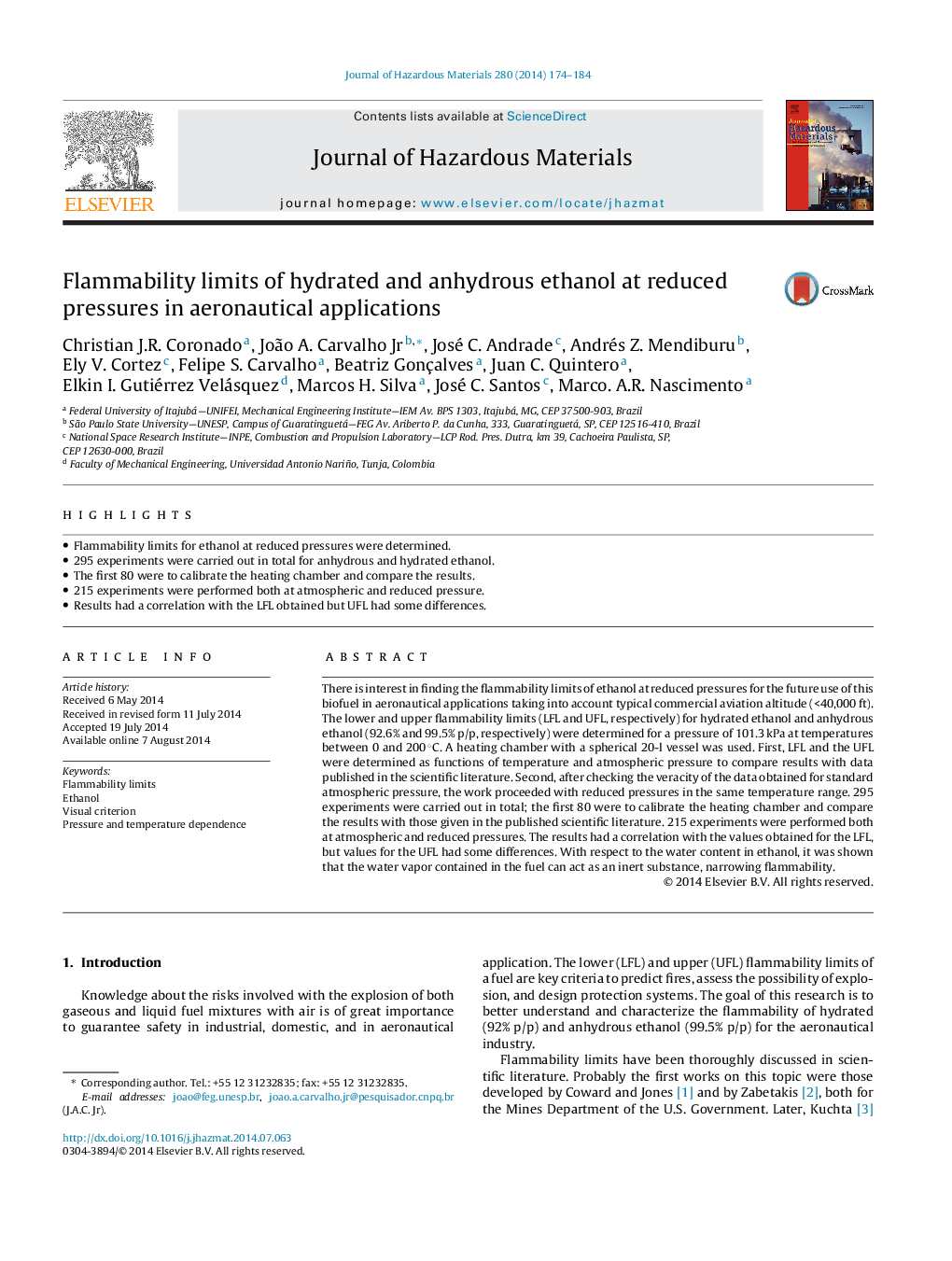| Article ID | Journal | Published Year | Pages | File Type |
|---|---|---|---|---|
| 6971339 | Journal of Hazardous Materials | 2014 | 11 Pages |
Abstract
There is interest in finding the flammability limits of ethanol at reduced pressures for the future use of this biofuel in aeronautical applications taking into account typical commercial aviation altitude (<40,000 ft). The lower and upper flammability limits (LFL and UFL, respectively) for hydrated ethanol and anhydrous ethanol (92.6% and 99.5% p/p, respectively) were determined for a pressure of 101.3 kPa at temperatures between 0 and 200 °C. A heating chamber with a spherical 20-l vessel was used. First, LFL and the UFL were determined as functions of temperature and atmospheric pressure to compare results with data published in the scientific literature. Second, after checking the veracity of the data obtained for standard atmospheric pressure, the work proceeded with reduced pressures in the same temperature range. 295 experiments were carried out in total; the first 80 were to calibrate the heating chamber and compare the results with those given in the published scientific literature. 215 experiments were performed both at atmospheric and reduced pressures. The results had a correlation with the values obtained for the LFL, but values for the UFL had some differences. With respect to the water content in ethanol, it was shown that the water vapor contained in the fuel can act as an inert substance, narrowing flammability.
Keywords
Related Topics
Physical Sciences and Engineering
Chemical Engineering
Chemical Health and Safety
Authors
Christian J.R. Coronado, João A. Carvalho Jr, José C. Andrade, Andrés Z. Mendiburu, Ely V. Cortez, Felipe S. Carvalho, Beatriz Gonçalves, Juan C. Quintero, Elkin I. Gutiérrez Velásquez, Marcos H. Silva, José C. Santos, Marco. A.R. Nascimento,
